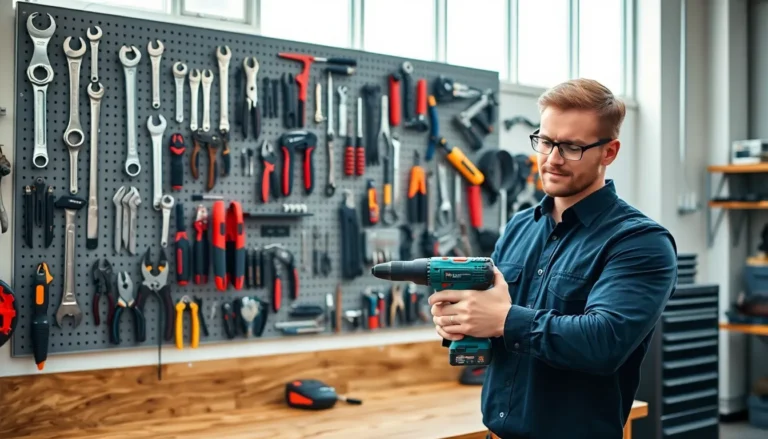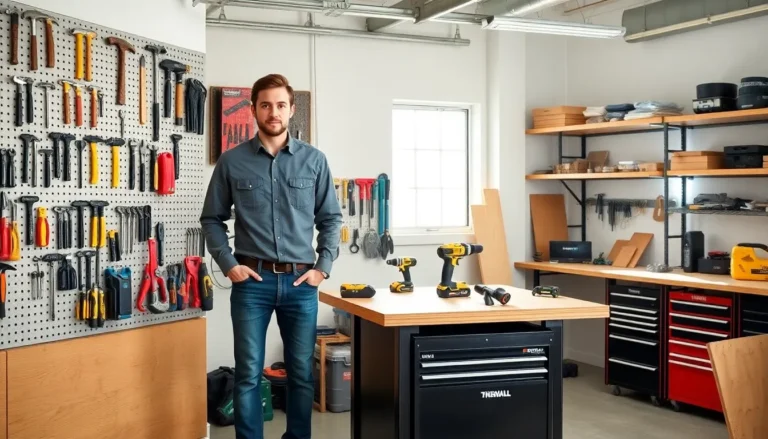Dreaming of turning your house into a home? Home improvement loans can be your ticket to creating that perfect space. Whether it’s a kitchen remodel or adding that cozy deck, knowing how to navigate these loans is essential. It’s like finding the right tool in a toolbox: the right loan can make all the difference. Get ready to jump into the world of home improvement loans, where your renovations meet financial solutions, and have your home looking sharp in no time.
Table of Contents
ToggleUnderstanding Home Improvement Loans

Home improvement loans are financial products specifically designed to help homeowners fund renovations and upgrades. These loans can be a smart solution whether you want to modernize your kitchen, add a bathroom, or boost your home’s curb appeal. Essentially, they allow homeowners to borrow money with the promise to pay it back over time, often through fixed monthly payments. It’s a way to tap into the value of a home, transforming it into the modern sanctuary an owner dreams of.
Types of Home Improvement Loans
When it comes to home improvement loans, not all options are created equal. Here are a few popular types:
1. Personal Loans
These unsecured loans are based on creditworthiness and do not require collateral. They are easier to obtain but usually come with higher interest rates due to the lack of security.
2. Home Equity Loans
These loans tap into the equity built in the home, offering a lump sum at a fixed interest rate. It’s like using your home as an ATM, but with a little more responsibility.
3. Home Equity Lines of Credit (HELOC)
This revolving line of credit works somewhat like a credit card, allowing homeowners to borrow as needed against the equity in their property. Flexible and convenient, but also risky if not managed carefully.
4. FHA 203(k) Loans
Backed by the Federal Housing Administration, these loans combine the home’s purchase price and renovation costs into one mortgage, perfect for those buying fixer-uppers.
Choosing the right type depends on individual needs, equity, and how much one is willing to borrow.
How to Qualify for Home Improvement Loans
Qualifying for a home improvement loan typically requires meeting several criteria:
- Credit Score
Most lenders require a decent credit score. Generally, scores above 620 can unlock better rates and options.
- Income Verification
Lenders will assess income stability. Prospective borrowers should be prepared to provide pay stubs, tax returns, and potentially other income documentation to prove the ability to repay.
- Debt-to-Income Ratio
A low debt-to-income ratio shows lenders that an individual can manage additional debt. Ideally, this should be below 36%.
- Home Equity
For certain loans, like home equity loans or HELOCs, the amount of equity in the home can determine eligibility and loan amount.
Benefits of Home Improvement Loans
Home improvement loans offer several advantages:
- Increased Home Value: Upgrades can significantly raise a property’s market value.
- Tax Benefits: Interest on home equity loans may be tax-deductible, providing potential savings come tax season.
- Flexible Loan Amounts: Depending on the type of loan, options may range from small amounts to significant sums.
- Quick Access to Funds: Many loans can be processed quickly, providing funds when they’re needed most.
Investing in home improvements can lead to increased enjoyment of the home, alongside enhancing its resale value.
Steps to Apply for a Home Improvement Loan
Applying for a home improvement loan can seem daunting, but following these steps can simplify the process:
- Determine the Project Cost: Gauge how much funding is needed for renovations.
- Research Lenders: Compare offers from various lenders, checking interest rates, terms, and conditions.
- Check Your Credit Score: Knowing your credit score can lead to better offers. If it’s low, consider fixing any issues before applying.
- Gather Documents: Prepare necessary documentation such as income statements, proof of home ownership, and estimates for projects.
- Apply: Submit your application to the chosen lender and be ready for the waiting game.
- Use the Funds Wisely: Once approved, ensure the funds go directly into the improvement projects.
Tips for Choosing the Right Loan Option
Deciding on the perfect home improvement loan involves careful consideration:
- Compare Rates: Don’t settle for the first quote. Shop around to find the best rates and terms.
- Consider the Project Timeline: Short-term needs might be best served by a personal loan, while larger projects might require home equity options.
- Read the Fine Print: Understand all terms, fees, and conditions associated with the loan.
- Evaluate Your Financial Health: A solid grasp of personal finances can aid in making a choice that won’t cause stress down the line.



